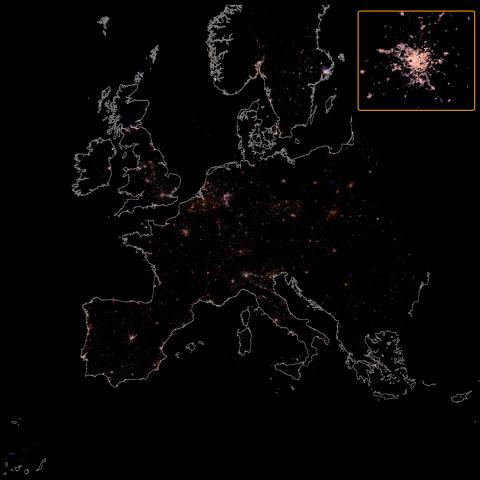Reaction to a study measuring the rapid increase in global light pollution over the past decade
The brightness of the night sky has increased by 7 to 10 % per year (depending on the region of the world) in the range visible to the human eye, according to an analysis based on 51,000 observations made with the naked eye by citizen scientists between 2011 and 2022. According to the research, published in Science, this increase is faster than what can be observed with satellites; satellites cannot detect blue emissions from LED lights, which are increasingly used in street lighting.

Using data from a citizen science project, the study reveals that, to the naked eye, artificial lighting has darkened the night sky faster than satellite measurements indicate. Credit: NOIRLab/NSF/AURA, P. Marenfeld.
Alejandro Sánchez - contaminación lumínica EN
Alejandro Sánchez de Miguel
EMERGIA post-doctoral research in the Sky Quality Office
The article seems quite robust. In this case, humans are being used as sensors. Human physiology is not going to change for a long time and therefore, when it comes to very large amounts of data, [the human eye] is more reliable than satellite images. The conclusions of the paper are along the same lines as those we published a few months ago about what satellites can say. The study allows us to see that light pollution is growing around the world, but it does not allow us to know exactly where.
This research indicates that the growth of light pollution is much faster than we expected and that it is global. The most important thing is not the loss of visible stars (that is a secondary issue): what is really worrying is the environmental impact.
Alejandro Sánchez declares to have close personal or professional relationships with some of the co-authors of the research.
Christopher C. M. Kyba et al
- Research article
- Peer reviewed



